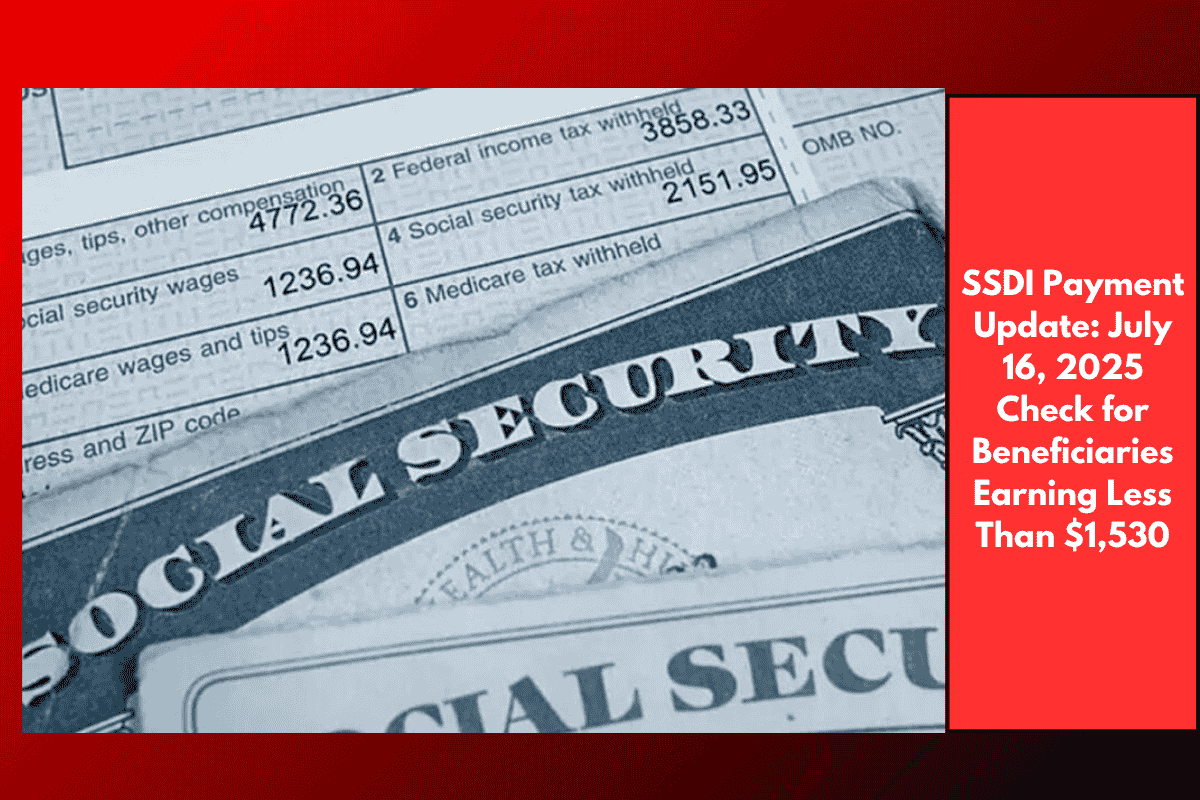Good news for Social Security Disability Insurance (SSDI) beneficiaries: the second batch of payments will be distributed on July 16, 2025, for those born between the 11th and 20th of the month. However, to ensure you receive your payment without any issues, it’s important to meet the requirements and be mindful of income limitations.
Who Will Receive SSDI Payments on July 16, 2025?
The second group of SSDI recipients—those born between the 11th and 20th—will receive their payments on July 16, 2025. It’s essential to keep in mind that if you have other sources of income, your SSDI payment might be affected, or even withheld, if you exceed certain income thresholds.
Income Limits for SSDI Beneficiaries
To continue receiving your SSDI payments as normal, the total income you receive each month (including other benefits or work earnings) must stay within established limits. Here’s what you need to know:
$1,530 per month if you are not blind.
$2,590 per month if you are blind.
If your total monthly income exceeds these limits, your SSDI benefits may be reduced or discontinued. It’s crucial to report any income changes to the Social Security Administration (SSA) to ensure your benefits are not disrupted.
How to Report Income Changes
If your income has changed, you must update your details on mySocialSecurity. This will help the SSA adjust your benefit amounts accordingly and avoid potential reductions or cancellations. Make sure you’re up-to-date with your work history on the SSA platform to ensure a smooth process.
What Happens If You Exceed the Income Limits?
If your income exceeds the maximum amount, it could affect your SSDI payment. However, the SSA does have some exceptions, such as:
Trial Work Period (TWP): If you’re in a Trial Work Period, you can earn more than the established limits without losing your SSDI benefits, but this is only allowed for a limited time.
Cost of Living Adjustment (COLA)
The Cost of Living Adjustment (COLA) for SSDI has already been applied to your monthly payments. COLA adjustments happen once a year, in January, and this year’s increase is already reflected in your payments. Other than COLA, there will be no additional changes to the amount of your SSDI payments unless a special decision is made by the SSA.
How to Stay Within the Income Thresholds
To make sure you remain within the income limits for SSDI, it’s crucial to track your monthly earnings carefully. If you’re unsure whether your income exceeds the threshold, you can:
Access your work history through your mySocialSecurity account.
Review updated earnings to ensure you don’t surpass the limits.
What to Do If You Exceed the Income Limits
If you earn more than the monthly limit, you might lose your benefits unless you’re in a Trial Work Period (TWP). If you’re unsure about your current work status or if your earnings may impact your benefits, you can request a work status verification letter from the SSA.
Important Notes:
SSDI payments are based on your work history, disability status, and income.
COLA increases have already been applied to your payments, so no further increases are expected unless stated otherwise by the SSA.














